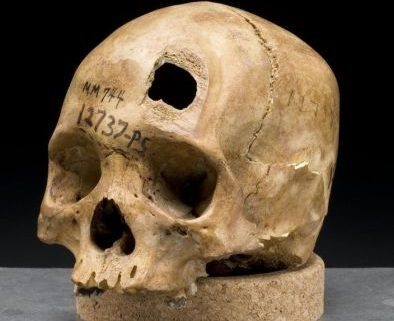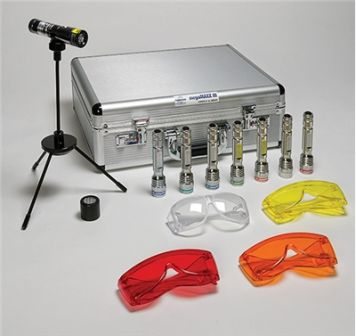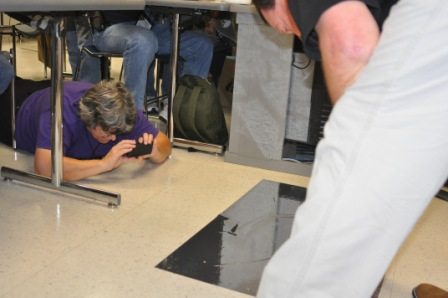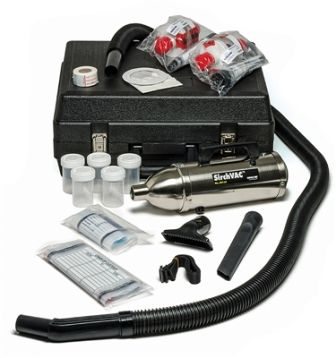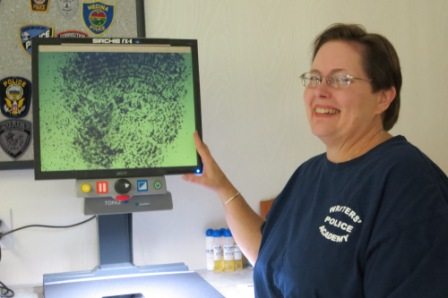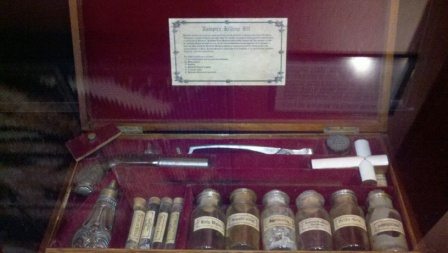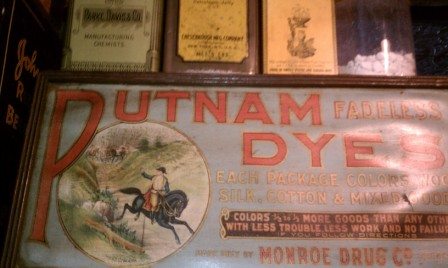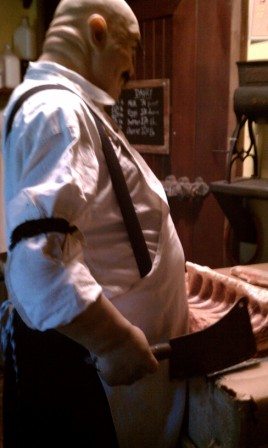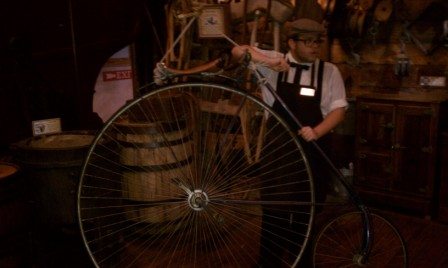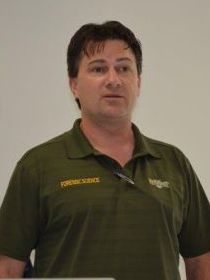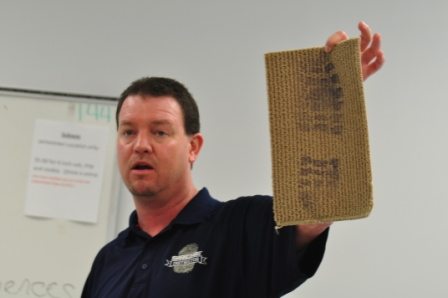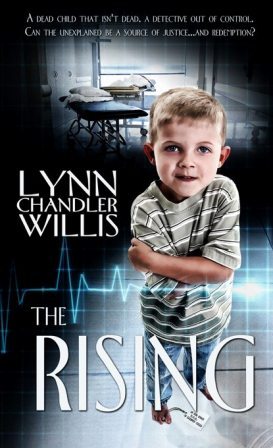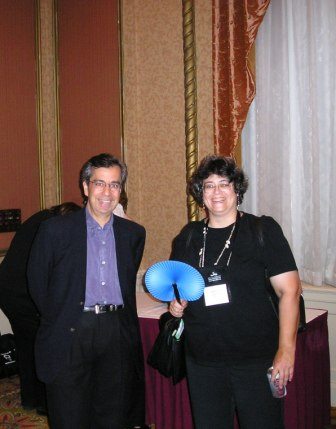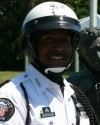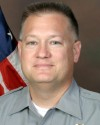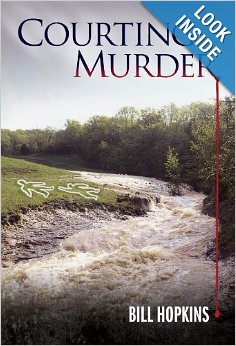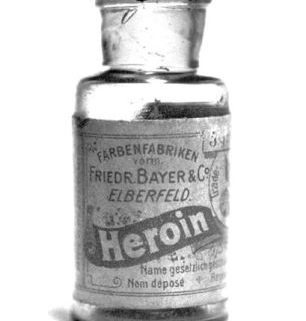Well, they’re back, and they’re engaged. Yes, the game is over. The mind-numbing “I love you, do you love me” plot line has ended. Finally.
Beckett accepted Castle’s proposal and then she was off to a new job in the nation’s capital, where she’d step into the role of secret agent. Now, however, while Beckett’s doing her thing in the world of spies, espionage, and treason, Castle’s forced back into the solitary role of mystery writer. And it’s not working for him. Let’s face it, what’s more exciting, chasing bad guys and solving murders, or sitting in an office, alone, banging out plots that you once participated in as part of your daily routine? The mere thought of giving up the action-filled and adrenaline-inducing job is just, well… Hey, wait a minute. That’s what I did. I made the switch from carrying a gun and wearing a badge to sitting in my office, alone, writing about my former career.
Hmm. Now that I think about it, I haven’t been shot at, cut, stabbed, punched, or spit on since I started writing. No wrestling with drunks or getting hit with sticks and stones. No one has urinated in the back seat of my car since I left the business. Or on me, for that matter. No dead bodies in the street. No one has come running toward me with a knife firmly embedded in their neck. And not once, not once, mind you, have I had to kick in someone’s front door to search for an armed-to-the-teeth slime ball who just butchered his wife of 16 years.
But, you know what, I really miss it. So, here, Melanie. Take over while I reminisce for a minute or two.

Melanie Atkins
Finally, after a long summer of waiting, it’s Castle night! I almost keeled over from suspense before the hiatus ended. What about you? I must have watched the end of last season’s finale at least a thousand times, at regular speed and in slow motion, as I attempted to find anything to give me a clue as to how Kate might respond to Rick’s proposal. My question was the same as tonight’s Twitter hashtag for Castle that trended worldwide: #willshesayyes.
Now, of course, we know she did. And yes, I’m thrilled. Beyond thrilled. Ecstatic. I loved the episode, even though the federal agent-toxic nerve agent thing at the end seemed a bit far-fetched. Who knows if it really is, however, with all the crazy stuff going on in the world today? This is Castle, for crying out loud. I’m willing to suspend my disbelief enough to buy any plot as long as Kate and Rick are together.
Of course, after not seeing each other for six weeks after Kate takes the new job in DC and starts training, they are both climbing the walls until Rick surprises her with a spontaneous visit. Their reunion made me squee, but the scene wasn’t long enough. I wanted more!
Kate is buried in an important classified case, and she can’t tell Rick about it — only, this is Castle, so what’s he going to do? Stick his nose into it anyway, with the help of Ryan and Esposito via phone, and get both himself and Kate into big trouble. He’s such a lovable doofus.
He promises to stay out of the case after Kate reads him the riot act, and all is well until he is abducted at gunpoint by a guy who dies behind the wheel of a car — and they crash. Yikes!
Federal agents arrest Rick, but soon learn he was indeed abducted and had nothing to do with the guy or the case. He heard the man refer to “Valkyrie”, however, and that might possibly pertain to the case. Even so, Kate is afraid she might lose her job if Rick stays in town and keeps popping up, so he volunteers to head home. He doesn’t want to get her into trouble.
Turns out he has his own trouble brewing at home, anyway, in the form of Pi, the new boyfriend Alexis brought home from Costa Rica. Pi is a fruitarian from Amsterdam who rubs Rick the wrong way, and I love it. He’s cute, too. I can’t wait for Kate to meet him.
Linda Edelstein plays Rachel McCord, Kate’s new partner on the federal task force, and she seems a bit put off by Rick. I don’t believe she likes Kate having a fiancé who distracts her from her duties. She certainly doesn’t like Rick sticking his nose where it doesn’t belong. I have a feeling her attitude is going to come back to bite Kate at some point.
Rick keeps investigating once he gets home, of course, even though he promised Kate he wouldn’t — heck, I don’t think he could stop if he tried. He’s too curious. When federal agents turn up at the loft and take him into custody, Rick at first believes they’ve been tracking his Google searches. Or maybe that’s just my wild imagination.
Turns out the real reason they’re bringing him in is much more serious: The man who abducted Rick and forced him into the car in DC, then crashed, died from an aerated toxin filtered through the vehicle’s air vents. So Rick was exposed to the same toxin. He has one day left to live.
Ack! What a cliffhanger! And in the first episode of the season, right after Kate accepts his proposal. Well, so much for relaxing now that the season has begun. I’ll be a nervous wreck until next week. Rick will survive, of course, since he’s the title character, but not without a lot more angst, frustration, and gnashing of teeth.
What did you think of this week’s episode? I loved it. Can’t wait for more engaged Castle!

Lee Lofland
My role in these reviews is to pick apart the police procedure and forensics and then report the good and the bad. Well, there was very little of either in this episode, which made my job easy. Therefore, I was able to enjoy watching and listening to Castle’s one-liners. Of course, Fillion delivered the quick funnies flawlessly, as usual.
After watching Beckett make her transition from street cop to Special Agent Secret Squirrel in what appears to be mere weeks, I’m really hoping that writers out there don’t misunderstand and start penning federal law enforcement training as something that only lasts for a few days, because it’s far more detailed and intense. For example, newly hired Border Patrol agents must attend an 89-day basic training course that includes 105 hours of practical exercise training. The practicals are extremely realistic role-playing exercises where agents are exposed to at least 200 scenarios. Remember the building searches at the Writers’ Police Academy? Well, amplify that intensity by 100 and then do it in a couple hundred different situations, with real people as the bad guys. It is intense.
Anyway, I mentioned the training period because the show seemed to have Beckett in training, yet she was called away to work an extremely high-profile case (sort of like Clarice in the Silence of the Lambs). For starters, there are no lateral transfers from local homicide detective to superstar secret agent. It’s a different business, and everyone, even Beckett, must complete the required training course(s).
And that brings me to Beckett giving up her gun and sliding it to the man who was holding a woman hostage at gunpoint. So, they’ve started the season with Beckett already surrendering her weapon to a bad guy. Sure, the distraction device went “poof” and she was able to get her gun back, but she was lucky. Well, that and the writers made it work out for her. In real life, though, cops never give up their weapons. Suppose the distraction device malfunctioned? There’d she’d be, as she often is, without a gun while the thug then has two.
It would be nice for law enforcement if they had cameras on every single corner in our cities so they could have 24/7 video access to every move a crook makes, but they don’t. There are already more cameras out there than I feel comfortable with, but most of those are owned by private businesses or individuals. The cops do not have immediate access to them, especially in the sense that they can track someone block after block after block as they walk the streets. But, on this show, Secret Squirrel and her new partner have the entire city and everything about it at the touch of an interactive computer screen.

Secret Squirrel Becket and her new partner searching for clues
Beckett, the newest member of the secret agent squad, leads the team on a raid, where she kicks in the door, which, by the way, broke pieces of the door, the door jamb, and the surrounding door casing. First of all, most of the dangerous federal “raids” are conducted by specially-trained teams. Certainly, the newest member of the Secret Squirrel Squad, who is still in training, would not be the lead person through the door. Oh, and the part about the door crashing in with bits of woods flying everywhere. Nah. I’ve seen big, burly 225lb kickboxing cops who kicked and kicked and kicked and the doors never budged an inch. Besides, kicking in doors is pretty much a thing of the past, unless there’s no time to gather the troops and the officers need to gain immediate entry. Nowadays most officers use breaching tools or rams.
Sometimes, though, it pays to check the doorknob. You’d be surprised how many are actually unlocked, and it’s pretty doggone embarrassing to learn this after totally destroying a front door and it’s lock.
Finally, some of you may be wondering about the chemical weapon used to kill the guy in car with Castle. Sure, it’s possible for chemicals to be aerosolized (Syria). Remember, though, that the aerosol cannot be transmitted from one person to another, like a virus. Each person must inhale the aerosol to be affected.
So you tell me. Was the show believable? Or, were the law enforcement aspects just pure silliness. Remember, fiction is just that, something that’s made up to entertain. But believable make-believe is the secret to good fiction. It doesn’t have to be real, just make us believe that it is.
Jack Reacher is the perfect example of believable make-believe, and he’s so good at being a believable character that a few years ago I arrested him (played by Lee Child) for murder. He even confessed to the crime on the witness stand before a judge and jury. I had his signed statement and I had solid physical evidence that he’d committed the crime, including DNA.
Subsequent to Reacher’s public confession, the prosecutor asked the defendant why he killed the man, and Reacher’s reply was short and simple. “Because he needed killing.”

Lee Child as Jack Reacher, “Because he needed killing.”
And, even while knowing that Jack Reacher openly confessed to murdering a man, the jury found him not guilty. The jury foreman was asked why they let Reacher off the hook for murder, and without hesitation she replied, “Because he’s hot!”
The trial was all in fun, but it was a great learning tool, because Lee Child’s believable make-believe works really well, and so should yours.
background: #bd081c no-repeat scroll 3px 50% / 14px 14px; position: absolute; opacity: 1; z-index: 8675309; display: none; cursor: pointer; top: 2376px; left: 20px;”>Save

